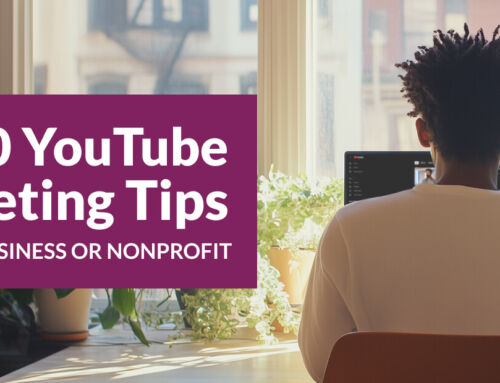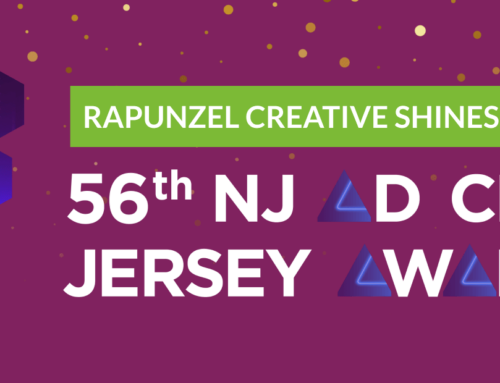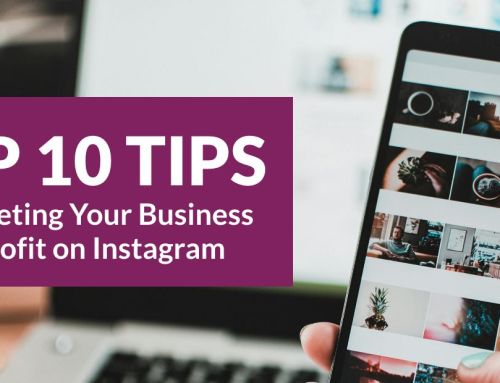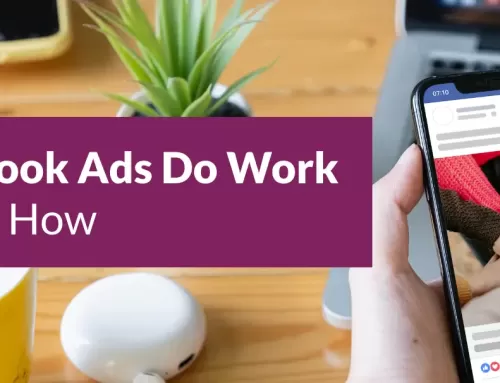Join Rapunzel Creative President, Lynn Gregorski, Thursday, May 21st at 12 noon for a 30-minute webinar on trademarking your big idea. Wendi Opper Uzar, Intellectual Property Counsel at Riker Danzig Scherer Hyland & Perretti, will walk us through the basics of trademarking a name or logo for your business or products.
We’ll also talk about pandemic-related logos, merchandise and phrases that are being trademarked right now. Get the 411 on COVID-related terms that are in use now and what you need to know for social media and your personal and corporate communications.[/fusion_text]
Trademark and Copyright Tips Webinar Transcript
—
00:00 S1: My name is Lynn Gregorski. I am the President of Rapunzel Creative Marketing. We are a full-service, woman-owned marketing agency, and we work with businesses, corporations, and nonprofits, and we help them build dynamic brands and messages that are gonna really resonate with their audience. As a strategist at heart, part of everything that we do is creating some type of strategy or marketing campaign with our clients to help them get their message out there and generate business. And I’m joined today by Wendi Opper Uzar, who is going to introduce herself. And I want to thank Wendi for doing this webinar with me today.
00:54 S2: Hi, Lynn. You’re very welcome, and thank you for putting this together and having me today. I’m happy to be here and have the opportunity to be on this webinar with you. As Lynn said, my name is Wendi Opper Uzar. I’ve been an intellectual property attorney for 15 years. I handle patent, trademark and copyright prosecution, litigation enforcement matters. I am also a registered patent attorney, meaning I can prosecute and enforce patents. My background is in mechanical engineering, and I am currently a counsel at the law firm of Riker, Danzig, Scherer, Hyland & Perretti, which is located in New Jersey. I do note that the information I provide today on this webinar does not constitute legal advice and is for general informational purposes only.
01:56 S1: Today’s webinar is about protecting your big idea, your product, your service. If you have something that you’re working on, whether it’s something that you sell, a written work you created, something that you’ve designed, music that you’ve composed, a logo, a brand, we’re gonna talk about what you need to do to protect those items. And then we’re also going to share with you what’s going on with the pandemic, because there’s been a lot of savvy entrepreneurs that are taking advantage of these times. And they always say, “When there’s down times, there’s always opportunity,” and there’s people that are also using this as an opportunity to go ahead and trademark ideas that they have.
02:43 S1: Today, Wendi is gonna walk us through copyrights, trademark, what is the difference between the two, so that we can really understand what we might need for our business. And then we’ll share some of the COVID-19 related trends that are going on. And we’re gonna talk about what you should be aware of if you’re using any things that might be copyrighted or trademarked, and what you need to be on the lookout for. And then we’re gonna open it up to Q&A, so everybody will get to ask questions about their particular business, product, service, invention, whatever that may be. So, Wendi, let’s talk about copyright.
03:28 S2: A copyright protects an original work of authorship in any fixed form. The most common examples of copyrights are books, marketing materials, pictures or photographs, fabric designs, which would include patterns, sound recordings such as songs, motion pictures such as movies, computer software and the coding for the software, and websites, what you actually see on a website. And, getting a copyright gives the author certain exclusive rights to the works, and those rights include reproducing it or copying it, distributing the work, publicly performing the work, and making what they call as “derivative works,” which means amending it or adding things to it and then producing a new work as well.
04:20 S1: Wendi, can you talk about… I’m just curious about the websites. Do you need to copyright your website when you create it?
04:31 S2: In the United States, you obtain copyright rights as soon as you create the work. So, you have what’s called “common law copyright” rights to your work as soon as you create a website. However, if you ever wanna sue anyone, if they copy your website and they put the same thing out there, and you wanna enforce those rights, you will have to file and register the work first before you’ll be able to sue in court.
04:57 S1: Okay. And does that apply to all of the other areas like the books, the pictures, the designs?
05:04 S2: Yes, for any copyrighted work. You obtain rights when you first create it, and it’s in a fixed form. But if you ever want to enforce it in the federal courts, you will need a copyright registration to do so.
05:16 S1: Okay. So, there’s sort of a gray area there, right? If you wanna be sure that you’re really covered, you need to go and get the copyright.
05:24 S2: Right.
05:25 S1: Okay. And then I know you’ve outlined some do’s and don’ts for us.
05:30 S2: This is a very simplistic list, but I just wanted to cover some basics that I found to be important, which is what we were just talking about, is register your important works quickly. If you register your work before someone copies it or there’s an infringement, you’re entitled to what’s called “statutory damages.” So, even if the person who copies your work does not make any money on the copying of it or putting it online, you’re still entitled to certain damages if you have that copyright registration before they infringe your work. I would also advise you to copyright photographs you use, especially if you are putting them online. This will protect you if someone else copies your pictures and puts them on their website or blog. It’ll also protect you if someone claims later on that that’s their picture, and they have it on their blog and they come after you.
06:33 S2: People do this all the time. Don’t take a picture that you find online, copy it, and then put it on your website. That is a common pitfall that people do, and then you’ll get a cease and desist letter from Getty Images, or one of the big brands, and they will enforce those rates and demand a lot of money from you. Another one people like to do is don’t copy people’s marketing materials or manuals. Those are also protected by copyright and could get you into some trouble.
07:05 S1: And I’ve had somebody copy a photo that I took and used it on their website. Years ago, I owned an online store. I photographed all of my products, and I actually found my photos on a distributor site, and they actually had lifted them right off my website and were using them to wholesale their product. So, it does happen. I was just lucky that I happened to come across that site, because I probably never would have known.
07:50 S2: Right. Well, what the big companies do is there’s… In Google, there is the option to search by image. So, I feel they put some of these pictures out there just to let people drop them and then they search for the image, they can find it rather quickly, and then they’re making a lot of money on this. It’s a pitfall that happens to people, so I wouldn’t recommend it.
08:12 S1: Yeah, they’re sort of baiting us.
08:14 S2: Yeah. That’s my opinion.
[chuckle]
08:17 S1: And so, we talked about copyrights. Now, let’s talk about trademark so that we can understand what the difference is between the two.
08:29 S2: Right? So, a trademark is any word, name, or symbol, or device that’s used by a company to identify and distinguish its goods from the goods or services of others. When you see a trademark, you wanna think of where that good or service came from, and then think of the quality of the service that’s associated with it. When you think of a trademark, you also think it carries the goodwill of the company, and it protects the public from deception or confusion as to the source or the quality of the good or service.
09:05 S1: Okay. I know you’ve put together this slide with some common trademarks that are out there.
09:12 S2: These are just some common trademarks that I thought of that most people see and they know, the golden arches of McDonald’s. We have Coca-Cola, Amazon, Google, Facebook, Bass, Apple, Instagram, NFL, the Hershey Kiss, Instagram, and the Blue Box from Tiffany’s. These are just some common trademarks, where you see the mark and you know the service that’s gonna be provided or the goods that are sold. If you walked into a restaurant having the golden arches and they didn’t sell your favorite hamburger or french fries, you would be upset, and you would have a right to be because when you see that, you expect the quality that is associated with McDonald’s.
09:55 S1: Okay. And then because of the times that we’re in, to give you some other examples, we thought it would be interesting to show what’s going on with the pandemic. And when I talked to Wendi about putting this together, I was actually really surprised by some of these numbers.
10:17 S1: Yeah. I did a search, and this is end of two weeks ago when I put this together. And there was 209 trademarks filed with the United States Patent and Trademark Office since February of this year that contained “COVID” in them. There was 34 trademarks that contained the word “pandemic” that had been filed since February 2020, and there was 126 trademarks that had been filed containing the word “corona” since February 2020. So, there’s certainly a good number of people trying to use this as a marketing tool and benefit from the situation. And I bet if I search today, the numbers would be even higher.
11:01 S1: I’m sure they would be higher. I’m gonna move over to this slide about adopting a marker or a logo so that you can explain this to us.
11:14 S2: Whenever a client comes to me and talks about creating a new mark for their brand, I try to help people realize that the stronger mark you create is better for you and your company. So, if you’re gonna choose a mark to describe your goods or services, you never want that to be descriptive. That’s the lowest level and the weakest trademark you can have, when the mark describes the goods. So, for two examples that are very common are The Weather Channel. You hear The Weather Channel, and you know that it’s gonna be some kind of channel that discusses weather. And another one is Pizza Hut. It’s a place where you’re gonna go and have pizza.
11:57 S2: Those are very weak marks, but as you move across the spectrum, you can see there’s also things called suggestive marks, which is you might be able to tell what it’s about, but it’s not necessarily descriptive. And two examples there are Netflix and The North Face. Then we move on to arbitrary, which is one step stronger of a mark, and there we have Apple and Starbucks, where you hear the marks, and it really gives no indication as to what the product or service is that’s related to it. And then we have fanciful marks, which are the strongest marks because they are made up. They are not even in English… They’re not even in the English language, they’re just completely made-up terms. For there, we have Exxon and Adidas.
12:37 S1: When would somebody want to trademark their logo? At what point in their business journey would you say they would want to do that?
12:50 S2: You can file a trademark for your logo any time. In the US, you get rights when you start using the mark in commerce. So, as soon as you’re using it, you do acquire some rights. I would say, we’ll get to it later, but there’s things to do before you file, which is search, to make sure you can use the mark, which I know we’re gonna talk about. But I would say filing at any time… Obviously, the earlier you file, the earlier you put the world on notice that you’re using it and that you confirm that you have the right to use it.
13:25 S1: Okay. And within your industry, what are you seeing are some of the most common violations of a trademark?
13:36 S2: We see all sorts of people copying trademarks in all sorts of ways. You can use someone’s trademark in a domain name. We see people using them on their website to sell goods, using them on Amazon, in their listing names just to attract attention. There’s all sorts of ways that people are using other people’s marks.
14:33 S2: I had a couple more just basic trademark tips, which is, whenever you’re picking a mark, make sure you consider whether that mark has meanings in another language. I’ve had this come up a number of times, where even if you’re not aware that when you translate your English trademark into another language, it means something else and maybe something you do not wanna be associated with. So, that’s just something to consider. Another just trademark tip that a lot of people don’t know but is very easy to understand is you can use a symbol to indicate that you’re using something as a trademark, and if you use the TM, that’s for unregistered marks, that basically means, “I declare to the world that I’m using this as a trademark, anyone can use that for any mark. And then the register, the R with the circle around it, that’s the symbol for a mark that has been federally registered with the USPTO.
15:28 S1: Okay. I think that’s really interesting. Even for a business like mine, I can just add that TM to my logo as a first step to just say, “This is my logo. This is the… ” Is there any way to do it for your business name? Because that’s not visual, right? Or do you have to actually go through filing if you want to register your business name?
15:55 S2: If you’re using… And I believe we come into this later as well, but if you’re using your business name as a trademark, then you can certainly put the TM there. If it’s just the name of your entity, and you’re not using it as a trademark. But if you’re using it on your website, if it’s associated with your goods or services, then you certainly can put the TM there.
16:13 S1: Okay. So, you could just take the name of your business every time it’s written out, and it would have that TM attached to it, but you’d have to use it in every iteration of it, right?
16:23 S2: You don’t have to use it every time. You can just use it when the name is more substantial or dominant on the page.
16:32 S1: Okay. That’s very interesting.
16:38 S1: And then searching for a trademark is important as well. And I know that we do this as part of our logo design process. If we’re working with the business and their business has a name, we’ll usually go ahead and search or ask the client to do a search. So, can you talk about this so people understand what tools are out there for them to use, and what steps do they need to go through?
17:10 S2: Right. This is what we were discussing before, which is a lot of people, there’s a misconception that just because you file or start up a new company with the New Jersey Department of State, that means you’re entitled to use that name as a trademark, and that is not the case. Just because some things are available to be used as an entity name, which is really just for tax purposes and filing purposes, it doesn’t necessarily mean you have the right to use it as a trademark. So, we always suggest that our clients conduct a trademark search before they adopt a company name or any product name. And things that you can do is you can search the internet. These days it’s easy to find a lot of the companies out there. You can also search social networking sites. Then also the United States Patent and Trademark Office does have a database of all of the registered and applied for trademarks, which is located at uspto.gov, which you can search. Then I would obviously advise you to confirm or have a search run by a trademark attorney to confirm that that mark is available. Because what you don’t want is to put money and time into a new company, and then you launch, and a couple of months later, you’re getting a cease and desist letter from a third party saying, “That’s my trademark. You have no rights to use it, change your name.” That happens all the time, and that’s what we’d like to prevent.
18:34 S1: Okay, good to know. I think we covered everything, and I know that we wanted to share some recent trademark filings. And I’m actually gonna go to some of the more visual ones to start. I’ve been hearing the term “COVID baby” floating around, plus I know people that are pregnant, which I think is really funny. But when I searched it online, I was really surprised to see this onesie with the trademark pending tacked onto it. Tell us about these, and what you found?
19:20 S2: Okay. This is one of my personal favorites, ’cause me and my husband were even making jokes about how, nine months from now, there’s gonna be all of these new births and everyone’s gonna be calling them COVID babies. And then soon enough, someone filed the trademark for “COVID19 Baby” for onesies, so they’re gonna put out a line of baby clothes containing “COVID Baby” on it, and it’s gonna be the new rage shower gifts in about nine months.
19:46 S1: I think it is, and I think this goes back to what I was saying earlier, like I know that… What we’re going through is serious, and I know it’s got some downside, but I think it’s really interesting how some entrepreneurs are finding opportunity during these times.
20:05 S2: Yes, definitely. And then this “I heart COVID-19” that was filed for athletic apparel, so that company is gonna make some athletic clothing with “I Heart COVID-19” on it. We’ll see how that goes.
20:21 S1: Yeah, that’s totally unexpected. Yeah.
20:23 S2: This is another one of my favorites that… Actually my sister had made this joke, too, and I thought it was hilarious that someone filed for “COVID-19 pounds” for providing weight loss programs. The joke is now that you’re on quarantine, you’re overeating, and you’re gonna gain 19 pounds, and now there’s gonna be a weight loss program to help you with that.
20:47 S1: Yeah. It’s really clever and, hey, we need to laugh in these times, right? You can’t be too serious all the time.
20:54 S2: Yeah. And we saw there’s also someone filed for “I survived COVID-19” for hats, hoodies, shirts, sweatshirts, and T-shirts. And there we have, someone else filed for “Corona cocktail” for dietary supplements and liquor. They might have a problem because of the Corona brand for beers, but that’s a whole different story for another day, but that’s one that was filed. And then we also have this “Corona Survival Guide” that was filed for magazines, in the field of survival protection, medicine and pandemic.
21:34 S1: And this one, I love… I’ve seen a lot with the 6-foot, I’ve seen a variety of different T-shirts and other stuff with a 6-foot.
21:47 S2: Yeah. This warning sign was filed for T-shirts, posters, and signs. We have that COVID-19 logo that was also filed for athletic apparel, and this “F-X-C-K COVID-19” was filed for hats and shirts.
22:02 S1: And I’ve noticed that last one has become a very popular hashtag. I’ve even seen corporations, surprisingly some people on the corporate side using it on social posts. With the warning 6-foot, they’ve only filed for this particular logo design. Because I’ve seen… I’ve actually seen other shirts that say, “Stay back 6 feet,” or, “6 feet or else.” So, you would have to specifically file for that one design, right?
22:36 S2: Yes. When you file for a logo, you’re protecting the logo itself, you’re not protecting just the words. So, if someone else has a different design… If it says the same exact words, there might be an issue. But if you’re changing around the words and there’s a different logo, it could potentially be entitled to its own protection.
22:57 S1: And then our last set of examples goes over to the healthcare heroes line, that’s all over everything and on everybody’s front lawns.
23:08 S2: Right. Here we had… There was “healthcare hero scholarship for educational services and financial support,” there was “Healthcare Heroes,” which was… now this one surprised me because this is a recognition awards program to honor individuals who are making an effort to improve healthcare quality, and this trademark has actually been in use since 1992. So, whoever owns this, I was thinking they may be enforcing their trademark now if they wanna continue to use it because I have seen a lot of people using this in similar programs. That was just interesting that this has been going for quite some time. And we also saw “Healthcare Heroes” filed for stuffed animals and “Healthcare Heroes” for clothing.
23:57 S1: Yeah. I love the stuffed animals idea. I can see those selling in the gift shops and the kids stores and all kinds of other stuff. Really clever and smart that people are coming up with these unique ideas, but also I think you’ve given us some really good information to understand what we can do for our own businesses. Are there any communication risks or anything that we should be aware of with hashtags that we’re using or a copy that we’re using in our corporate communications and marketing, anything like that, that we should have top of mind?
24:43 S2: Well, whenever you use the hashtag, if you’re just commenting on something it’s one thing. But if you’re using it in connection with selling or offering some kind of service, you should always make sure that you’re not just pulling it from someone else. If it’s just right now, something about the crisis, usually it’s gonna be fine. But if you see a big corporation using it and they’re using it in connection with selling a good, then probably that they’re gonna claim some right to it, so you wouldn’t wanna use that.
25:12 S1: Okay. Great. Is there anything else that you want to add, Wendi, before we move into the Q&A?
25:23 S2: You had asked me one other time about what goes into filing for a trademark. I just wanted to touch on that briefly. If you wanna file a trademark, you file with the United States Patent and Trademark Office, you file in the class of goods or services that you’re seeking to protect. You’ll pay an attorney a service fee, and then there’s a government fee as well. And like we were talking, you could do a search prior to that to ensure that there’s no other marks existing that may borrow your mark.
26:06 S1: That’s great information. Okay. Let’s open it up for Q&A.
26:28 S1: “Does the attorney have to be in your own state or do trademark attorneys cover the US?”
26:44 S2: Trademark is governed by federal law, so any trademark attorney in the whole country can file a trademark for you. It does not have to be in your state. The same applies to copyright or patent work, it’s all governed by federal law. I have clients that are all over the country, and actually all over the world, because any time you wanna protect your work in the US, you can use any IP attorney.
27:11 S1: “Can you use the C with the circle to protect an un-authored work in draft form?”
27:24 S2: Well, if something is in draft form, that means it hasn’t actually been published yet, but any time you’re actually working on something, you can put the C for yourself, and I would advise you to also put the date that you created or that you have affixed it to the paper. But what becomes important in copyright filing is also the date that you publish it or it becomes available to the public, so keep a note of that as well.
27:49 S1: When you use the “Corona cocktail” thing and you made the thing about Corona beer, now, how is that possible that they would be able to get away with “Corona cocktail?”
28:16 S2: That was actually my comment. I’m not so sure they’re gonna get away with that. They have filed for it. It hasn’t become registered yet, so it will go through an examination period, in which time all the other trademarks that are owned by the Corona beer company will come up. And I have a pretty strong feeling that the examiner will be citing that against them, and they probably will not be getting any sort of protection.
28:39 S3: But the examiner could approve it?
28:42 S2: He could, but he has a duty to search what’s already out there or pending and cited against the pending application, because he would think consumers would be confused. So, if you saw a Corona a cocktail, you would certainly believe that it came from the same company as Corona beer, and that’s what the examiner would say, and likely refuse the mark.
29:54 S4: For how long does the trademark stay registered? Because I registered my trademark, I think, in 1985, and is that still valid? I haven’t heard anything otherwise.
30:14 S2: A trademark can last forever. However, you do have to renew it within certain time periods. That’s something that I’m not sure who filed the application for you and the registration, but there are certain time periods where you do have to maintain the mark. And the trademark office just wants to make sure you’re still using it, you pay a fee, and then it would continue on for another number of years.
30:39 S4: Well, what is the time period during which… When you have to keep renewing?
30:47 S2: There’s a five-year first time, then there’s a five… You have to renew it within the five and six-year mark. And then after that, it would subsist for another… If you file, then it’ll be 10 years, and then every 10 years thereafter.
30:58 S4: So, if I haven’t heard anything in all these years, does that mean it’s no longer a trademark?
31:05 S2: It’s probably become abandoned as far as the trademark office is concerned, but if you’re still using it, then you can either re-file for it and you still would put, list your first date of use in the registration. But if you haven’t heard anything and you haven’t renewed it, then it’s likely gone abandoned.
If you would like more information on copyright and trademarks you can reach Wendi Opper Uzar at Riker Danzig.








